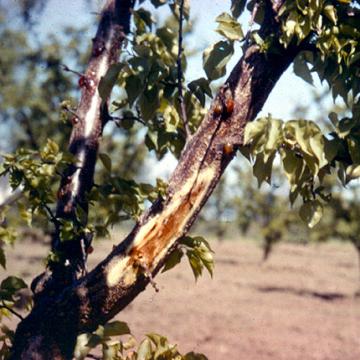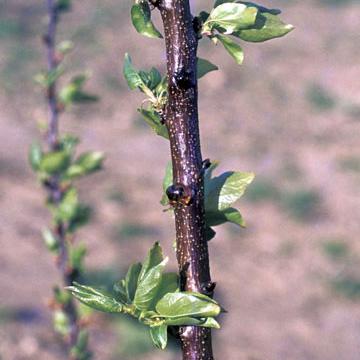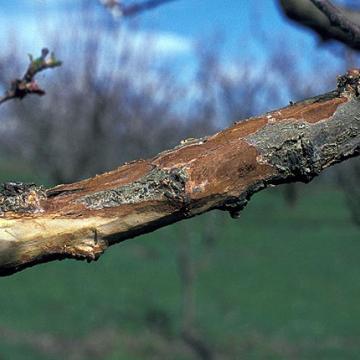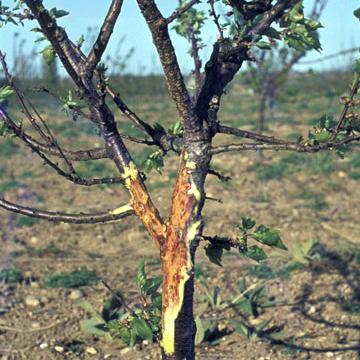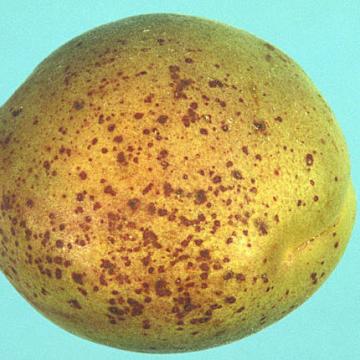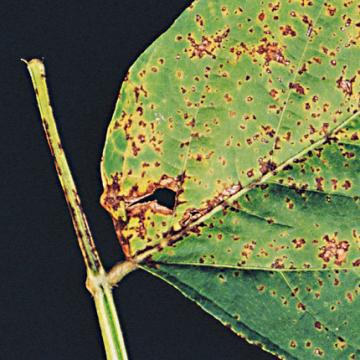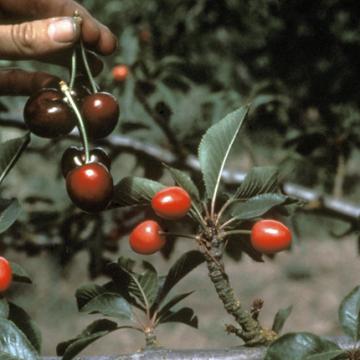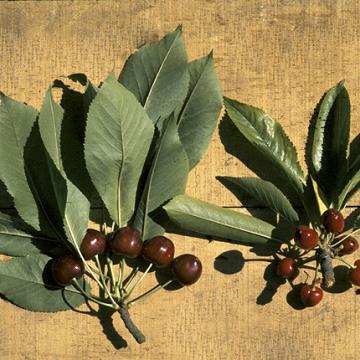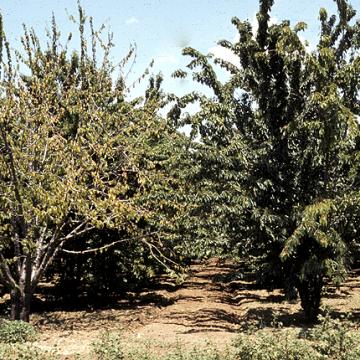DISEASE: Bacterial canker and blast
HOST: Apricot
Apricot with typical reddish brown-discolored tissues beneath the bark and gumming around infected areas.
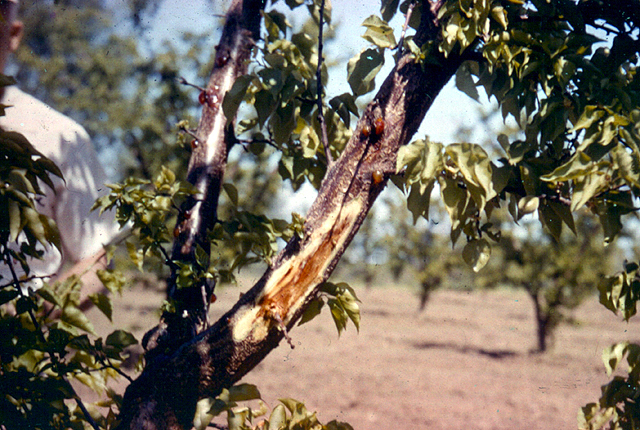
Bacterial canker and blast | Apricot
DISEASE: Bacterial canker and blast
HOST: Apricot (Prunus armeniaca)
PATHOGEN: Pseudomonas syringae pv. syringae
SOURCE: S. Sampson, M. Shurtleff
DISEASE: Bacterial canker and blast
HOST: Apricot
Young infected twig with droplets of bacterial ooze on stem.
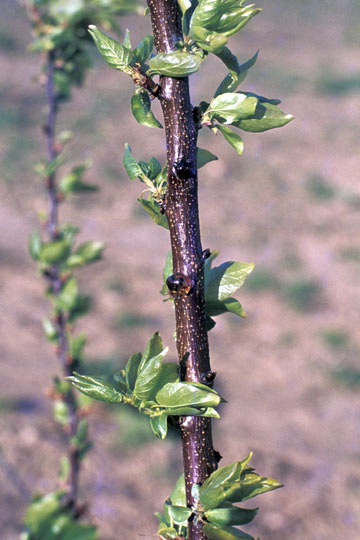
Bacterial canker and blast | Apricot
DISEASE: Bacterial canker and blast
HOST: Apricot (Prunus armeniaca 'Moorpark')
PATHOGEN: Pseudomonas syringae pv. syringae
SOURCE: J. Young
DISEASE: Bacterial canker and blast
HOST: Apricot
Bacterial canker has many symptoms. Typical symptoms are brown, sometimes reddish brown, internal tissues and rough, cracked bark.
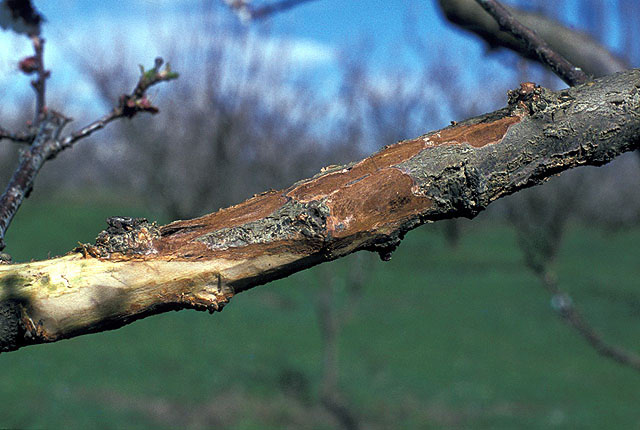
Bacterial canker and blast | Apricot
DISEASE: Bacterial canker and blast
HOST: Apricot (Prunus armeniaca 'Moorpark')
PATHOGEN: Pseudomonas syringae pv. syringae
SOURCE: J. Young
DISEASE: Bacterial canker and blast
HOST: Apricot
Infected apricot with sparse foliage (some twigs with no foliage) and a discolored area exposed where bark was removed.
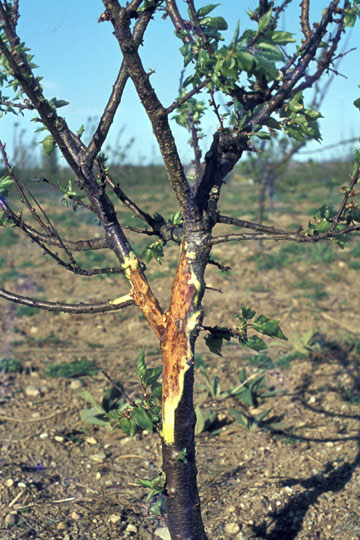
Bacterial canker and blast | Apricot
DISEASE: Bacterial canker and blast
HOST: Apricot (Prunus armeniaca 'Moorpark')
PATHOGEN: Pseudomonas syringae pv. syringae
SOURCE: J. Young
DISEASE: Bacterial canker and blast
HOST: Apricot
Fruit spot phase with numerous reddish necrotic spots.
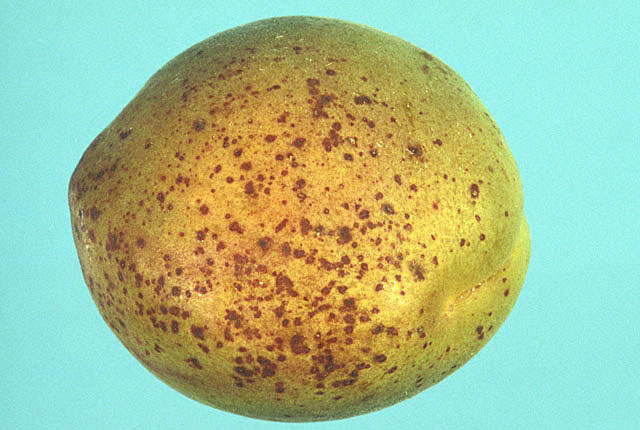
Bacterial canker and blast | Apricot
DISEASE: Bacterial canker and blast
HOST: Apricot (Prunus armeniaca 'Moorpark')
PATHOGEN: Pseudomonas syringae pv. syringae
SOURCE: J. Young
DISEASE: Bacterial pustule
HOST: Soybean
Early symptoms are minute, pale green spots on young leaves. Later, small pustules form in the center of spots, best observed on underside of leaves. Spots vary in size and darken with age and lesions coalesce. Dead areas are torn away by wind.
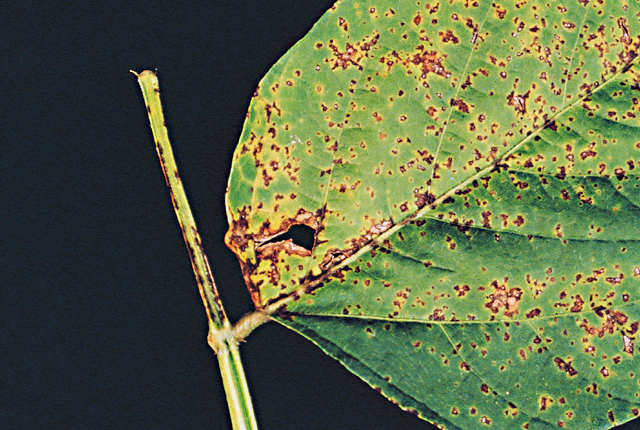
Bacterial pustule | Soybean
DISEASE: Bacterial pustule
HOST: Soybean (Glycine max)
PATHOGEN: Xanthomonas axonopodis pv. glycines
PATHOGEN SYNONYM: Xanthomonas campestris pv. glycines
SOURCE: APS
DISEASE: X-disease (Western X) or buckskin
HOST: Cherry
Comparison of normal, dark cherries (in hand) with infected, immature cherries with less pigmentation.
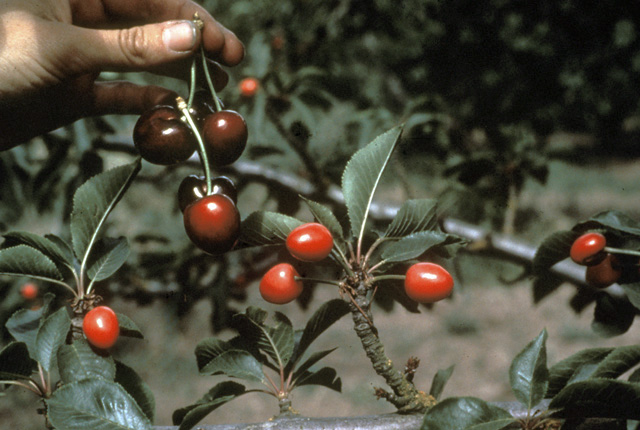
X-disease (Western X) or buckskin | Cherry
DISEASE: X-disease (Western X) or buckskin
HOST: Cherry (Prunus avium)
PATHOGEN: 'Candidatus Phytoplasma pruni'
PATHOGEN SYNONYM: Phytoplasma X-disease group
SOURCE: A. Purcell, M. Davis
DISEASE: X-disease (Western X) or buckskin
HOST: Cherry
Healthy cherry shoot (left) and stunted shoot (right).
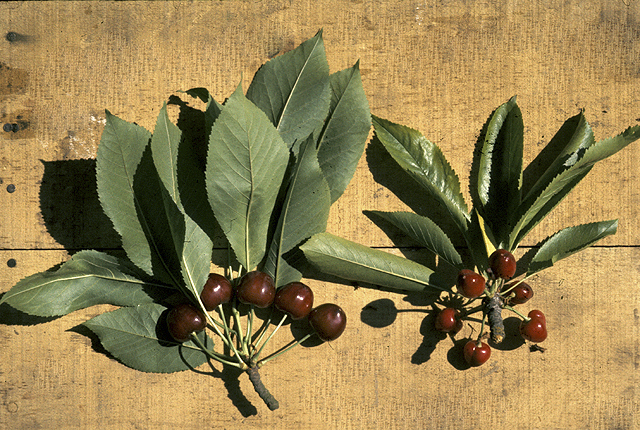
X-disease (Western X) or buckskin | Cherry
DISEASE: X-disease (Western X) or buckskin
HOST: Cherry (Prunus avium)
PATHOGEN: 'Candidatus Phytoplasma pruni'
PATHOGEN SYNONYM: Phytoplasma X-disease group
SOURCE: S. Thomson
DISEASE: X-disease (Western X) or buckskin
HOST: Cherry
Infected trees on 'Mazzard' rootstock (right) may live for years, producing fruit with symptoms. Trees on 'Mahaleb' rootstock (left) usually die rapidly in year of infection, about time of fruit ripening.
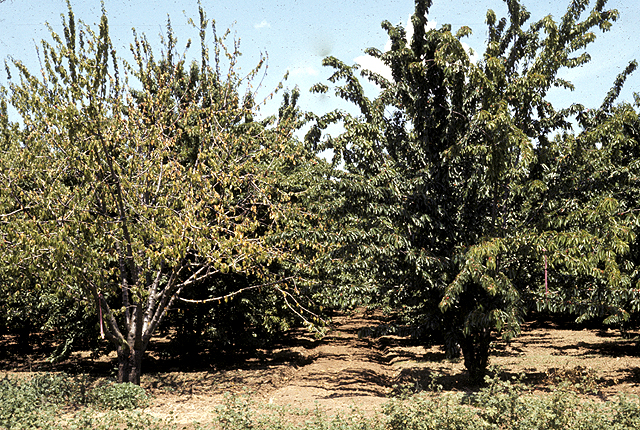
X-disease (Western X) or buckskin | Cherry
DISEASE: X-disease (Western X) or buckskin
HOST: Cherry (Prunus avium)
PATHOGEN: 'Candidatus Phytoplasma pruni'
PATHOGEN SYNONYM: Phytoplasma X-disease group
SOURCE: S. Thomson


